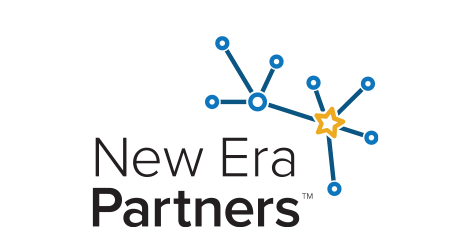The January 20, 2026 compliance deadline for FDA’s Food Traceability Rule (FSMA 204) is now two years away. That may seem like a long time but it really isn’t given the complexity and scope of the preparations that must be made by companies that manufacture, process, pack, or hold commodities on the Food Traceability List (FTL).
The predominant goal of FSMA 204 is to allow for faster identification and rapid removal of potentially contaminated food from the market. The rule requires companies that manufacture, process, pack, or hold foods on the FTL to maintain records containing Key Data Elements (KDEs) associated with specific Critical Tracking Events (CTEs). They must provide that information, in the form of an Electronic Sortable Spreadsheet, to FDA within 24 hours or within a reasonable time to which the FDA has agreed.
You don’t have to comply overnight and there are resources to help you at every step of the way (more on this later). But Andy Kennedy, Principal Traceability Advisor at New Era Partners, and a co-writer of FSMA 204, has designed a timeline outlining the path to compliance that has also been posted as an article series on iFoodDS.com.
This timeline is broken into four phases:
- Learn about the rule before you act and implement any new processes or systems;
- Plan your path to compliance;
- Do all the work you set out to do; and
- Review and update your processes as needed.
At this point, larger enterprises – retailers, foodservice operators, distributors, and large processors with large supplier networks – should have completed the learning and planning phases and be poised to “do” the work you’ve planned. After summarizing the learning and planning phases, we’re going to dive into what your to-do list might be looking like right now.
Learn
- The first step is to read and understand FSMA 204. At 179 pages, that may seem daunting, but fear not. Andy has prepared a guide to reading the rule in a way that makes it easier to understand.
- Since the release of the rule, additional information has been published on the FDA FSMA 204 Website. Specific areas to review include new Supply Chain Examples for produce, seafood, cheese, deli salads and other foods on the FTL, additional Traceability Lot Code information, a Small Entity Compliance Guide, Traceability Plan Examples for farms and restaurants, and many updates to the Frequently Asked Questions.
- Next, you’ll want to determine if the rule applies to you by reviewing the FTL. You’ll be subject to requirements if you manufacture, process, pack, or hold any foods on the FTL.
- Determine your customers’ requirements for receiving your KDEs. Will they require an Advanced Shipping Notice (ASN)? What specific labels are required for cases and pallets? Must you enter data into an online portal or have a cloud-based solution? And are they planning to implement a network traceability solution across their entire supply chain?
- Determine your supplier’s ability to share shipping KDEs with you. You’ll want to be sure they are sending you what you need in such a format that your systems can quickly ingest that data. your suppliers’ ability to share shipping KDEs with you. Evaluate your current systems for capturing, maintaining, and sharing KDEs and CTEs. Most companies use multiple systems today for managing this information.
- Prepare a detailed gap analysis to outline whether your current processes and systems enable you and your supply chain partners to fully comply with FSMA 204.
Plan
- FDA requires a Food Traceability Plan with specific requirements as to what you need to include. We’ve outlined those requirements here and provided an example of a Traceability Plan in this downloadable infographic.
- Before creating the Traceability Plan as required by FDA, you’ll want to build out a project plan that addresses the gaps in your systems and processes that you identified in the learning phase.
- Research various methods and technologies for collecting your KDEs. Pilot your top choices internally and with suppliers. FSMA 204 does not require one specific solution provided you can capture data and store it for two years, share KDEs with your trading partners and generate sortable spreadsheets for all relevant CTEs in 24 hours. However, a single source of truth for traceability data, like routinely collecting the data in a common data repository, makes it easier to fulfill these requirements.
- Evaluate results, make a technology recommendation, and create a traceability implementation timeline. Once you’ve made your choice on how to capture and share KDEs, make your recommendation to key stakeholders and work to develop an implementation timeline. Look for a solution partner that clearly communicates expectations, timelines, and software requirements upfront.
- Develop a budget and project plan internally and with suppliers. Now that you have selected a cloud-based food traceability solution or another method of capturing, maintaining, and sharing your traceability data, you should have a good idea of the associated costs and can finalize your budget. You’ll also need to solidify your project plan, including implementation and ongoing use of your new solution.
Do
Here we are at the place you should ideally find yourself on the compliance timeline. Now that you have plans in place, it is time to work with your internal teams and supply chain partners to act on your agreed-upon processes.
- Execute the project plan that addresses how you plan to comply with FSMA 204 and fill any gaps you discovered in the learning and planning phases.
- Communicate with trading partners,
- Communicate internally,
- Roll out your new project plan in stages that make sense for your organization and trading partners.
- Implement your new solution. A smooth implementation process, including proper staff training, will set you up for a successful execution. You’ll want to ensure that your new solution provider has met your requirements. This is the time to address any concerns there. Ensure that reports, dashboards, and storage meet your standards and that the right people have access to them. Document your processes and training procedures so that you can quickly train new staff.
- Collect, manage, and share CTEs and KDEs. Now it’s time to consistently collect KDEs from suppliers, store and manage those KDEs in your internal systems, and share them with your customers. If you need a refresher on which CTEs you are responsible for and which KDEs are required for each CTE, visit FDA.gov (view PDF).
- Generate Electronic Sortable spreadsheets. We recommend going through the process of creating your Electronic Sortable Spreadsheet now, even if one hasn’t been requested by FDA. Make sure you have identified more than one person who can do this.
- Produce records. It’s a good idea to double-check that you have all necessary records that may be needed supporting the information in the Electronic Sortable Spreadsheet. FDA may ask for additional details after the 24-hour period, so it’s a good idea to know where to find the information.
Challenges and Roadblocks
Despite all that you’ve learned and all the plans you’ve made, you may still be struggling with certain issues in the “do” phase. For example:
- Are you struggling to get your suppliers to send FSMA 204 KDEs to you? Are they still in the learning stage and you’re ready to start going?
- These are among the most common questions asked about this rule. There is no one-size-fits-all when it comes to managing your network of suppliers. The consideration you give to each one must be unique, depending on the format they will use to transmit KDEs and the means of communication that is most effective in reaching them. We strongly recommend writing a schedule for meeting your traceability requirements into your contract.
- It’s important for all entities in the food supply chain to understand the returns they’ll see on the FSMA 204 investment. It’s also important for them to understand the cost of non-compliance, which could include an outbreak of foodborne illness with the attendant loss of revenue and reputation.
- Have you determined that you need a new solution but are struggling to find one? Have you found one but are struggling with how to implement new processes?
- Be sure you have a clear checklist of your organization’s requirements, and insist that your new solution provider meets those requirements. Unsure where to start? New Era Partners can help.
- Are you unsure about the Electronic Sortable Spreadsheet?
- New Era Partners has posted a blog explaining what exactly FDA is looking for in this spreadsheet. In short, you should provide a spreadsheet for each Critical Tracking Event. Examples are now available on the Produce Traceability Initiative web site.
- Are you worried about how you will provide records to FDA in 24 hours? Do you have trustworthy people in place who know exactly where to find the information if needed on a Saturday morning? Will your systems be able to provide this information when needed based on FDA requests?
- FDA will specify the specific foods, locations, and the date ranges for which it seeks required traceability information. The agency has said it will strive to tailor the information request as much as possible so that firms can focus their efforts on the most relevant information.
- However, in most cases, FDA will not have detailed product or lot information. For example, they may ask for Receiving KDEs for lettuce, tomatoes, and cucumbers (and fresh products containing those ingredients) sold at one or more than one location, for a three-week date range that occurred a month ago.
- You should have more than one person trained to access the requested information so that someone is always available to fulfill a records request from FDA.
Review
- Lastly, you most likely are not here yet but once your new processes and systems are in place and have been executed, review those gaps you identified earlier. It’s a good idea to revisit these points on a regular basis and ensure compliance requirements are still being met.
- Establish a quality management program to measure accuracy, capture errors, and create corrective actions.
- Schedule regular third-party audits or monitoring of your traceability program to ensure that you continue to meet the FSMA 204 requirements.
- Review metrics regularly to determine the level of compliance. Regularly reviewing your traceability metrics will help you recognize gaps or areas where you need to adjust processes. By reviewing metrics in cohesive dashboards, you’ll more easily notice areas of concern.
Resources Are Available
Wherever you are in your journey to end-to-end traceability and FSMA 204 compliance, don’t panic. This is not a race, and is worth taking the time to do right. We are here to help.
The iFoodDS Trace Exchange solution is designed to help you easily and securely capture, store, share, and monitor KDEs, and provide the reports you need. We encourage you to Request a consultation to learn how they can help guide your organization through FSMA 204 compliance.
We also recommend expert support from consultants like New Era Partners, who will provide audit tools and services that may be performed quarterly, semi-annually, or annually, depending on the organization and commodity risk.
Collaborate with your trading partners. Each of the phases outlined above illustrates the importance of partnership. You’re all in this together.


